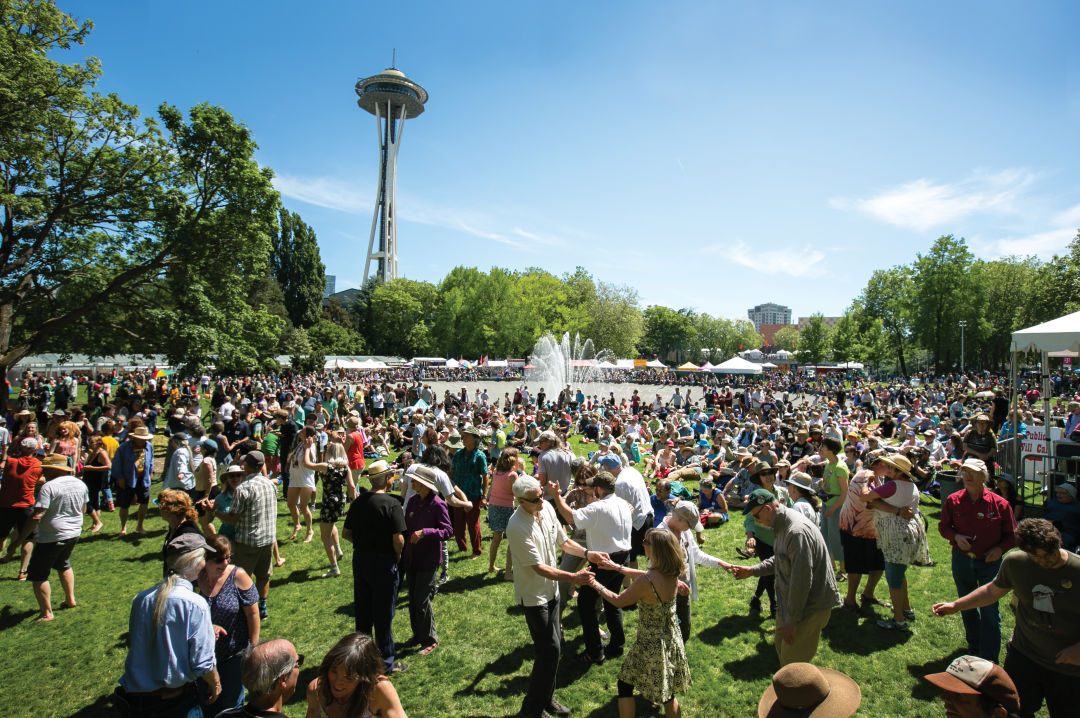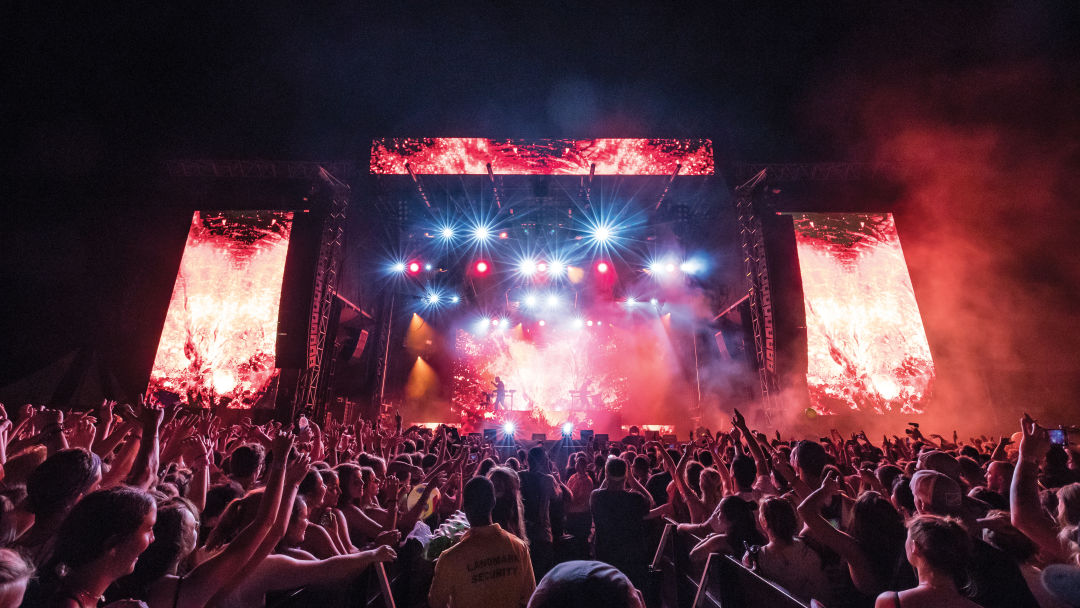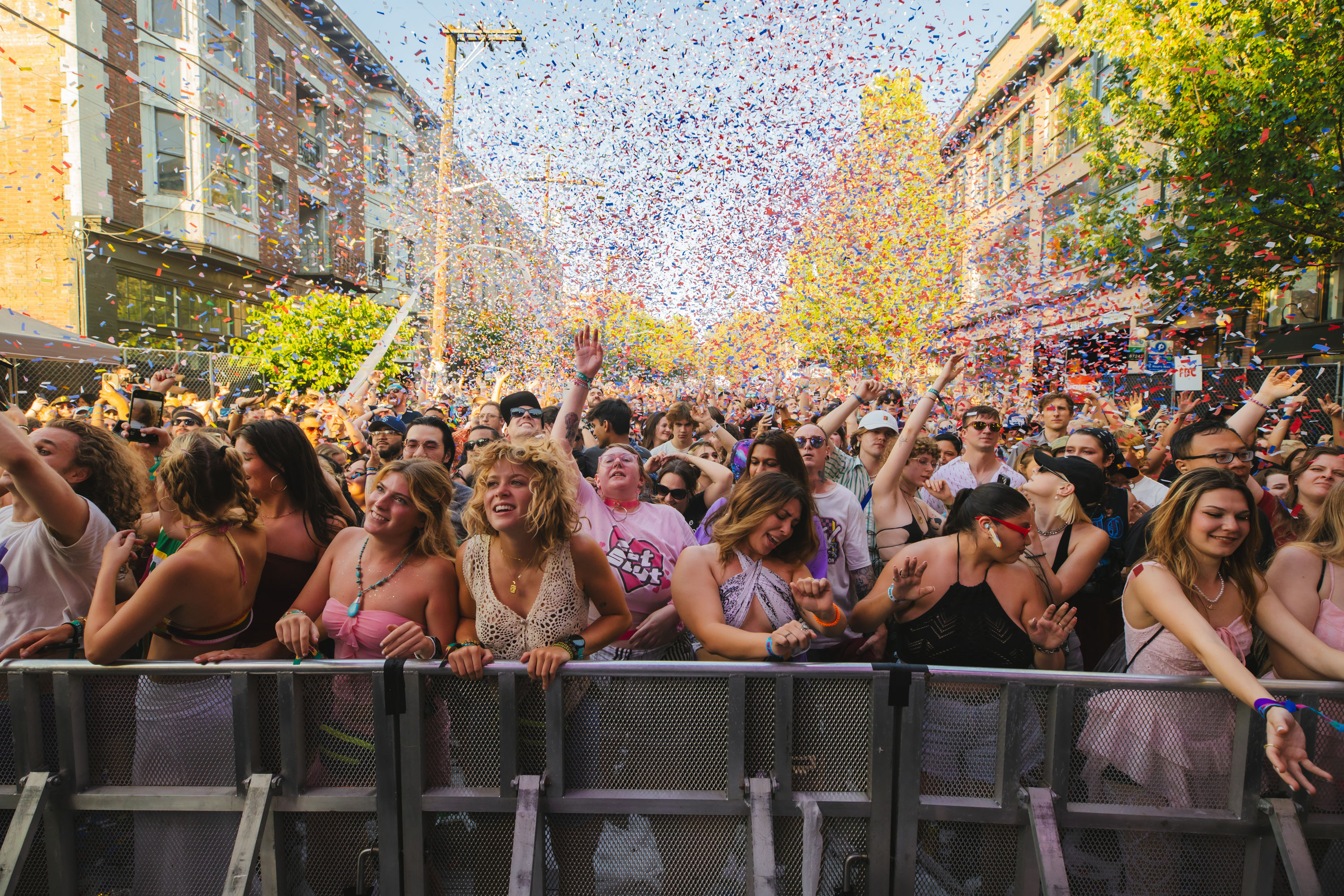What Does the Future Hold for Music Festivals?

Northwest Folklife returns for its 48th year this Memorial Day weekend.
Image: Christopher Nelson
On Memorial Day weekend 2018, Washington’s festival season roared to life. The twin pillars of Northwest Folklife and Sasquatch! Music Festival brought their usual hurly-burly of headbands, man buns and white dreads, drum circles, group dances on lawns, Pendleton blankets, street food, and Modest Mouse riffs. The next weekend, over 200 artists, like the Flaming Lips and Tacocat, played the second iteration of Upstream Music Fest in Pioneer Square.
But this summer kicks off rather differently. After 17 years, Sasquatch has called it quits. In January, Upstream—after only two years and following the death of its benefactor Paul Allen—announced it’s taking “a break.” And though the causes are various, the trend is undeniable: Festivals are suffering. Last year Bumbershoot had half the attendance it’d seen five years before, from over 100,000 to around 48,000. Capitol Hill Block Party, with its dance-oriented lineup, remains well attended, but neighboring businesses claim it’s hurting them, to such extent that the city is conducting a survey to see how viable the festival will be in coming years. According to The Seattle Times, even Leavenworth’s Oktoberfest, so traditionally established (Germany’s originated in 1810) you might expect it immune to cultural whim, also appeared disconcertingly sparse.
In February, event juggernaut Live Nation announced a replacement for Sasquatch. End of the Rainbow was to span Memorial Day weekend and feature EDM and hip-hop mainstays like Bassnectar and Young Thug. But in March the event was “postponed indefinitely” due to “unforeseen complications and key artist cancellations,” wrote Ticketmaster.

Odesza performs at Bumbershoot 2017.
Yet some carry on. Bumbershoot still holds down Labor Day weekend, and Michael Spadoni—the marketing director for AEG Presents, which produces the festival—blames any lower turnout on yearly fluctuations. Meanwhile July’s Timber! Music Festival, which started in 2013 and brings a list of largely local acts to a Carnation campground, has grown every year and sold out the last two. Timber organizer Kevin Sur says the festival’s inspiration was “taking those things about music festivals we didn’t like and just doing the complete opposite… People have room to move and never feel like they’re being herded like cattle.” Car Seat Headrest headlined last year and during the show—at a sold-out festival—I walked right up to the stage. It wasn’t a raging party. The energy level held at a good-natured thrum. But I also didn’t see anyone pass out in the crowd as I did the next weekend at Capitol Hill Block Party.
Aside from the cultural differences, Sur thinks that booking genuinely compelling acts has sustained Timber, kept it healthy in the face of national festival exhaustion—instead of just “having a big-font to small-font poster with every band everyone’s already heard of.”
Folklife—the multicultural extravaganza that takes over Seattle Center, now in its 48th year—returns May 24–27. It has a similar impetus: Focus on community. Don’t just try to draw massive attendance, but try to nourish those who attend. Yet the festival has had its own struggles. In 2017 organizers said that if they didn’t get enough donations, 2018’s production may be kaput. “For us we were just like, Give to make it live!” says Folklife’s executive artistic director Kelli Faryar.
It worked. Folklife pulled in the $350,000 in on-site donations it needed to continue. But that’s an ongoing hurdle. Reese Tanimura, Folklife’s managing director, says while some years are fine, others across its history have operated at a deficit. Since organizers estimate approximately 250,000 people attend each year, why not just charge a small entrance fee to secure the festival’s funding? “We are pretty adamant that part of our essential character would be to remain open and accessible,” Tanimura says. Gates add operation costs like security, yes, but they also become a “psychological barrier.” To remain culturally open, you need to remain physically open as well.
Annually Folklife picks a cultural focus and this year’s “Youth Rising” feels like a grab for the festival’s future, a way to pass down traditions and make new ones. As the culmination of a year-long mentorship program, young leaders and artists will curate their own segments. This includes something called “The Hydrant”: the name for both digital (a website, Instagram) and physical meeting spaces. It’ll debut at the festival with a youth art showcase. Tanimura and Faryar think the festival’s constant change is less a conscious ploy for young crowds than an organic response to what Seattle wants. Since Seattleites are Folklife—no other festival has such a hazy line between performer and audience—that’s the only way it can go on.
► 48th Annual Northwest Folklife Festival, May 24–27, Seattle Center, Donation Suggested




